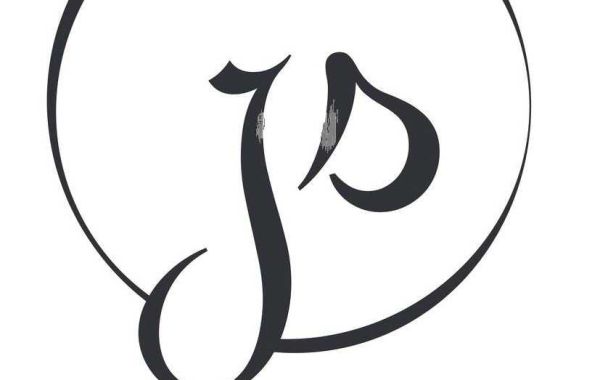Obsessive-Compulsive Disorder (OCD) is a complex and often misunderstood mental health condition that affects millions of people worldwide. At its core, OCD is characterized by two main components: obsessions (intrusive, unwanted thoughts, images, or urges) and compulsions (repetitive behaviors or mental acts performed to reduce the distress caused by obsessions). While OCD can feel overwhelming, there is hope. With the right tools and strategies, individuals can learn to manage their symptoms and reclaim their lives. Two powerful resources in this journey are OCD workbooks and books focused on overcoming unwanted intrusive thoughts.
In this article, we’ll explore how these resources can help individuals with OCD, highlight some of the best options available, and provide practical tips for using them effectively.
The Power of OCD Workbooks
OCD workbooks are structured, self-guided tools designed to help individuals understand their condition, identify triggers, and develop coping strategies. These workbooks often incorporate evidence-based techniques, such as Cognitive Behavioral Therapy (CBT) and Exposure and Response Prevention (ERP), which are considered the gold standard for OCD treatment.
Why OCD Workbooks Are Effective
Structured Approach: Workbooks provide a step-by-step framework, making it easier for individuals to tackle their symptoms systematically.
Practical Exercises: They include activities and exercises that help readers apply therapeutic techniques to their own experiences.
Accessibility: Workbooks can be used independently or alongside therapy, making them a flexible resource for those who may not have immediate access to a therapist.
Empowerment: By actively participating in their recovery, individuals gain a sense of control over their OCD.
Top OCD Workbooks to Consider
Here are some of the most highly recommended OCD workbooks:
1. The OCD Workbook: Your Guide to Breaking Free from Obsessive-Compulsive Disorder by Bruce Hyman and Cherry Pedrick
This comprehensive OCD workbook is a favorite among individuals and therapists alike. It offers practical tools for identifying OCD triggers, challenging obsessive thoughts, and reducing compulsive behaviors. The step-by-step exercises are based on ERP and CBT, making it an excellent resource for anyone looking to take an active role in their recovery.
2. Freedom from Obsessive-Compulsive Disorder: A Personalized Recovery Program for Living with Uncertainty by Jonathan Grayson
Dr. Jonathan Grayson, a leading OCD specialist, provides a personalized approach to overcoming OCD. This workbook emphasizes the importance of embracing uncertainty and includes practical exercises, case studies, and strategies tailored to individual needs.
3. Getting Over OCD: A 10-Step Workbook for Taking Back Your Life by Jonathan S. Abramowitz
This workbook is designed to help readers understand the cycle of OCD and break free from it. It includes 10 actionable steps, worksheets, and real-life examples to guide individuals through the recovery process.
Overcoming Unwanted Intrusive Thoughts
Unwanted intrusive thoughts are a hallmark of OCD and can be incredibly distressing. These thoughts often involve themes of harm, contamination, or taboo subjects, leaving individuals feeling ashamed or afraid. Books focused on overcoming intrusive thoughts provide reassurance, education, and practical strategies for managing these challenging symptoms.
Why Addressing Intrusive Thoughts Matters
Reduces Shame: Understanding that intrusive thoughts are a common symptom of OCD can help individuals feel less alone and ashamed.
Breaks the Cycle: Learning to respond differently to intrusive thoughts can reduce their power and frequency.
Promotes Healing: By addressing the root of the distress, individuals can move toward recovery and improved quality of life.
Top Books on Overcoming Unwanted Intrusive Thoughts
Here are some of the best books for understanding and managing intrusive thoughts:
1. Overcoming Unwanted Intrusive Thoughts: A CBT-Based Guide to Getting Over Frightening, Obsessive, or Disturbing Thoughts by Sally M. Winston and Martin N. Seif
This book is a must-read for anyone struggling with intrusive thoughts. Written by two experienced psychologists, it provides a compassionate and practical guide to understanding and managing these thoughts using CBT principles. The authors offer actionable strategies for reducing the distress caused by intrusive thoughts and breaking the cycle of obsession and compulsion.
2. The Imp of the Mind: Exploring the Silent Epidemic of Obsessive Bad Thoughts by Lee Baer
Dr. Lee Baer, a renowned OCD expert, explores the nature of intrusive thoughts and why they can feel so overwhelming. This book combines scientific research with practical advice, helping readers understand that these thoughts are a common symptom of OCD and not a reflection of their character.
3. Needing to Know for Sure: A CBT-Based Guide to Overcoming Compulsive Checking and Reassurance Seeking by Martin N. Seif and Sally M. Winston
While this book focuses on compulsive checking and reassurance-seeking, it also addresses the intrusive thoughts that often drive these behaviors. It provides practical tools for breaking free from the cycle of doubt and compulsion.
How to Use OCD Workbooks and Books Effectively
To get the most out of these resources, consider the following tips:
Set Realistic Goals: Break the material into manageable sections and set achievable goals for each session.
Be Consistent: Dedicate regular time to working through the exercises and reflecting on your progress.
Seek Support: While these resources can be used independently, they are most effective when combined with professional therapy or support groups.
Practice Self-Compassion: Recovery is a journey, and it’s okay to take small steps. Celebrate your progress, no matter how minor it may seem.
Final Thoughts
OCD workbooks and books on overcoming unwanted intrusive thoughts are powerful tools for anyone affected by OCD. They provide education, practical strategies, and hope for those seeking to break free from the cycle of obsessions and compulsions. While these resources are not a substitute for professional treatment, they can complement therapy and empower individuals to take an active role in their recovery.
If you or someone you know is struggling with OCD, consider exploring these resources. Remember, you are not alone, and with the right tools and support, it is possible to manage OCD and live a fulfilling life.








